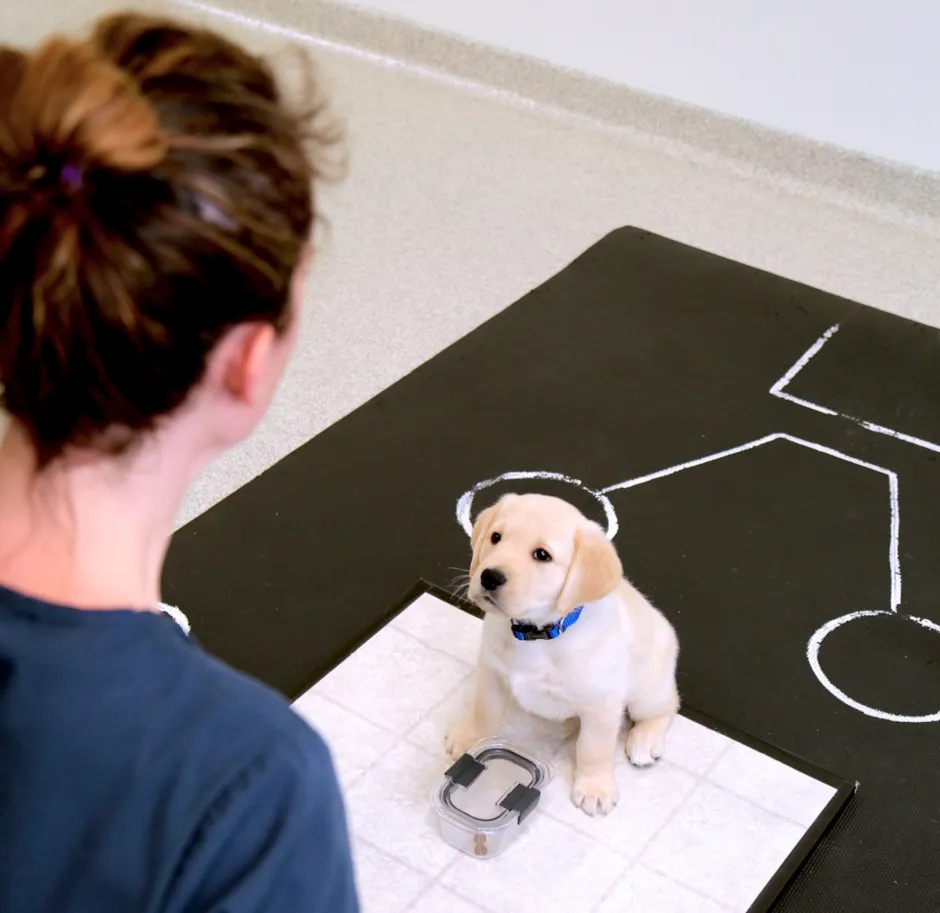Dogs may have earned the title of our best friend through their interactions with humans, but now researchers say these social skills could be present shortly after birth rather than being learned. Some pets even appear to start off with an advantage based on their genetics.
A new study found that genetics may help explain why some dogs perform better than others in social tasks such as following pointing gestures.
“There was evidence that these sorts of social skills were present in adulthood, but here we find evidence that puppies – sort of like humans – are biologically prepared to interact in these social ways,” said lead author Emily Bray, a postdoctoral research associate at the University of Arizona's school of anthropology.
Read more about dogs:
She has spent the last decade carrying out research with dogs in collaboration with California-based Canine Companions, a service-dog organisation serving clients with physical disabilities.
To better understand biology’s role in dogs’ abilities to communicate with humans, the researchers studied 375 of the organisation’s eight-week-old budding service dogs. They looked at how these animals, which had had little previous one-on-one interaction with humans, performed in a series of tasks designed to measure their social communication skills.
The researchers knew each puppy’s pedigree – and therefore how related they were to one another – and were also able to examine whether inherited genes explain differences in dogs’ abilities. According to the study, genetics explained more than 40 per cent of the variation in puppies’ abilities to follow human pointing gestures.
It also explained variation in how long they engaged in eye contact with humans during a task designed to measure their interest in people.
“People have been interested in dogs’ abilities to do these kinds of things for a long time, but there’s always been debate about to what extent is this really in the biology of dogs, versus something they learn by palling around with humans," said study co-author Evan MacLean, assistant professor of anthropology and director of the Arizona Canine Cognition Centre at the University of Arizona. “We found that there’s definitely a strong genetic component, and they’re definitely doing it from the get-go.”
At the time of the study, the puppies were still living with their litter mates and had not yet been sent to live with a volunteer puppy raiser. Therefore, their interactions with humans had been limited, making it unlikely that the behaviours were learned, the researchers suggested.
The findings indicated that puppies are skilful from the start when it comes to social communications relying on gestures and eye contact. In one task, a human hid a treat beneath one of two overturned cups and pointed to it to see if the puppy could follow the gesture. To ensure that the dogs were not just following their noses, a treat was also taped to the inside of both cups.
In another version of the task, puppies watched as the researchers placed a yellow block next to the correct cup, instead of pointing, to indicate where the puppy should look for the food.

Two other tasks were designed to observe puppies’ propensity to look at human faces. In one, the researchers spoke to the puppies in what they call dog-directed speech, reciting a script in the sort of high-pitched voice people sometimes use when talking to a baby. They then measured how long the puppy held a gaze with the human.
In the final task – a so-called unsolvable task – researchers sealed a treat inside a closed container and presented it to the puppy. They then measured how often the puppy looked to the human for help with opening the container.
The study, published in the journal Current Biology, found that, while many of the puppies were responsive to humans’ physical and verbal cues, very few looked to humans for help with the unsolvable task.
Researchers said this suggests that, while puppies may be born knowing how to respond to human-initiated communication, the ability to initiate communication on their own may come later. The next step will be to see if specific genes that may contribute to dogs’ capacity to communicate with humans can be identified.
